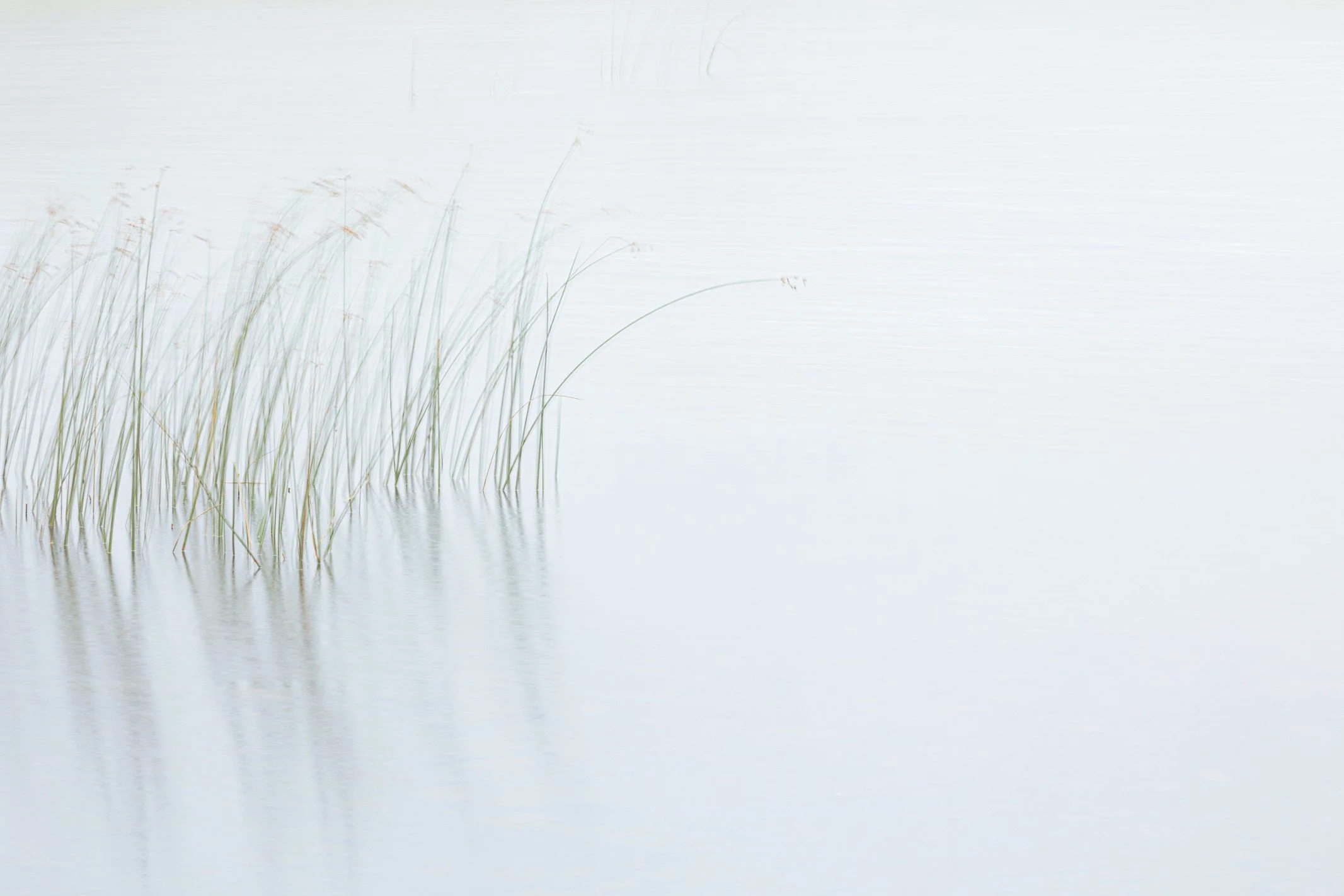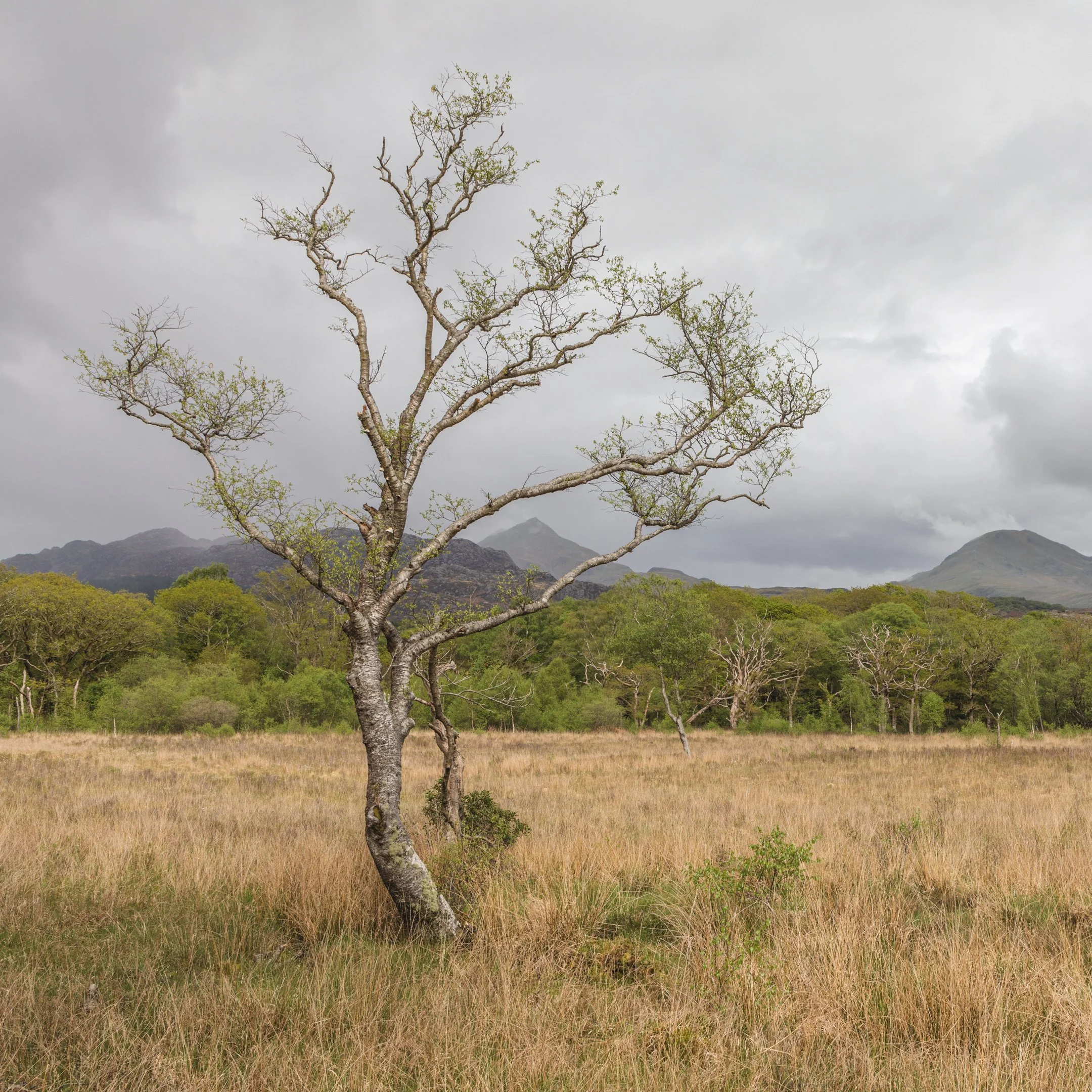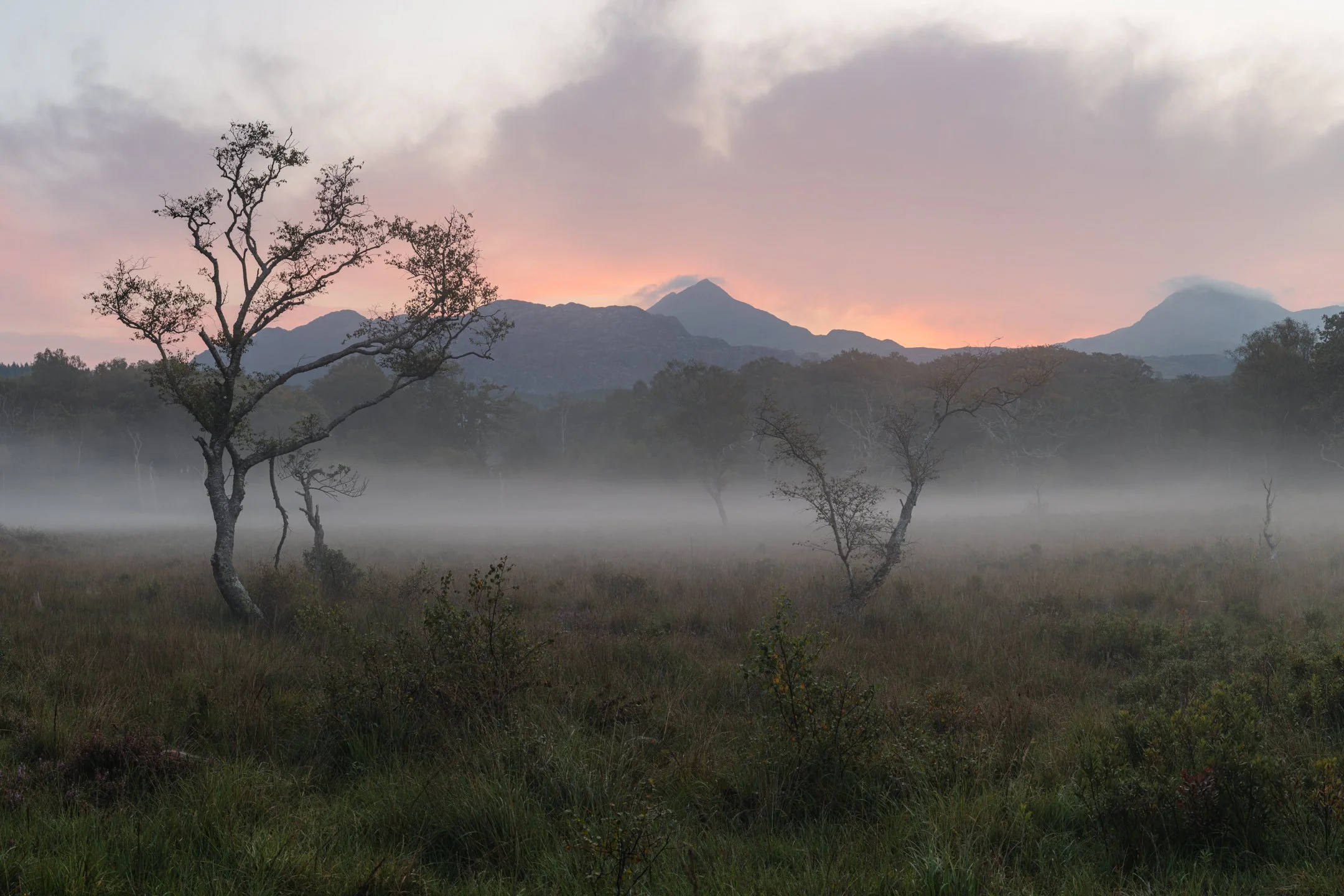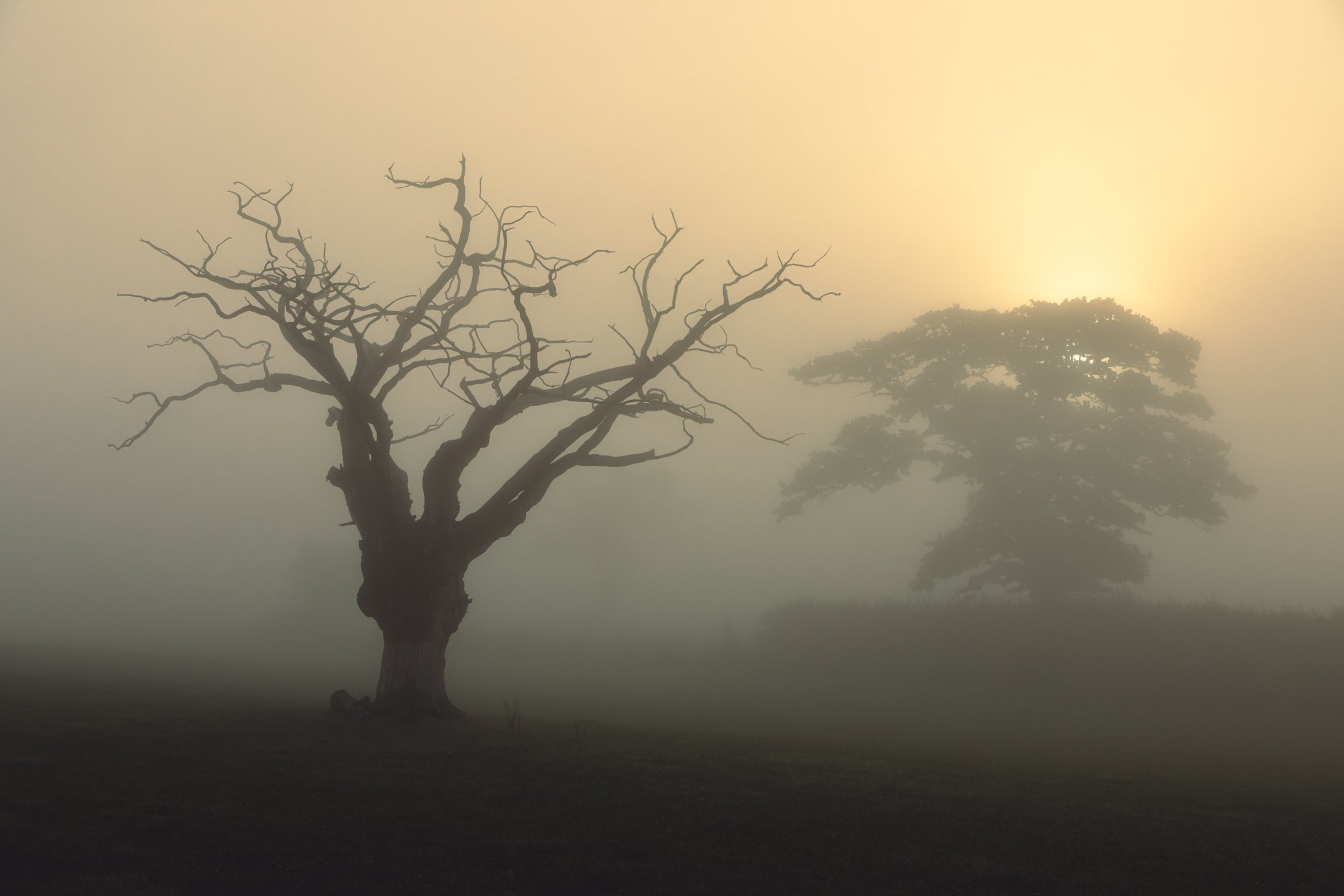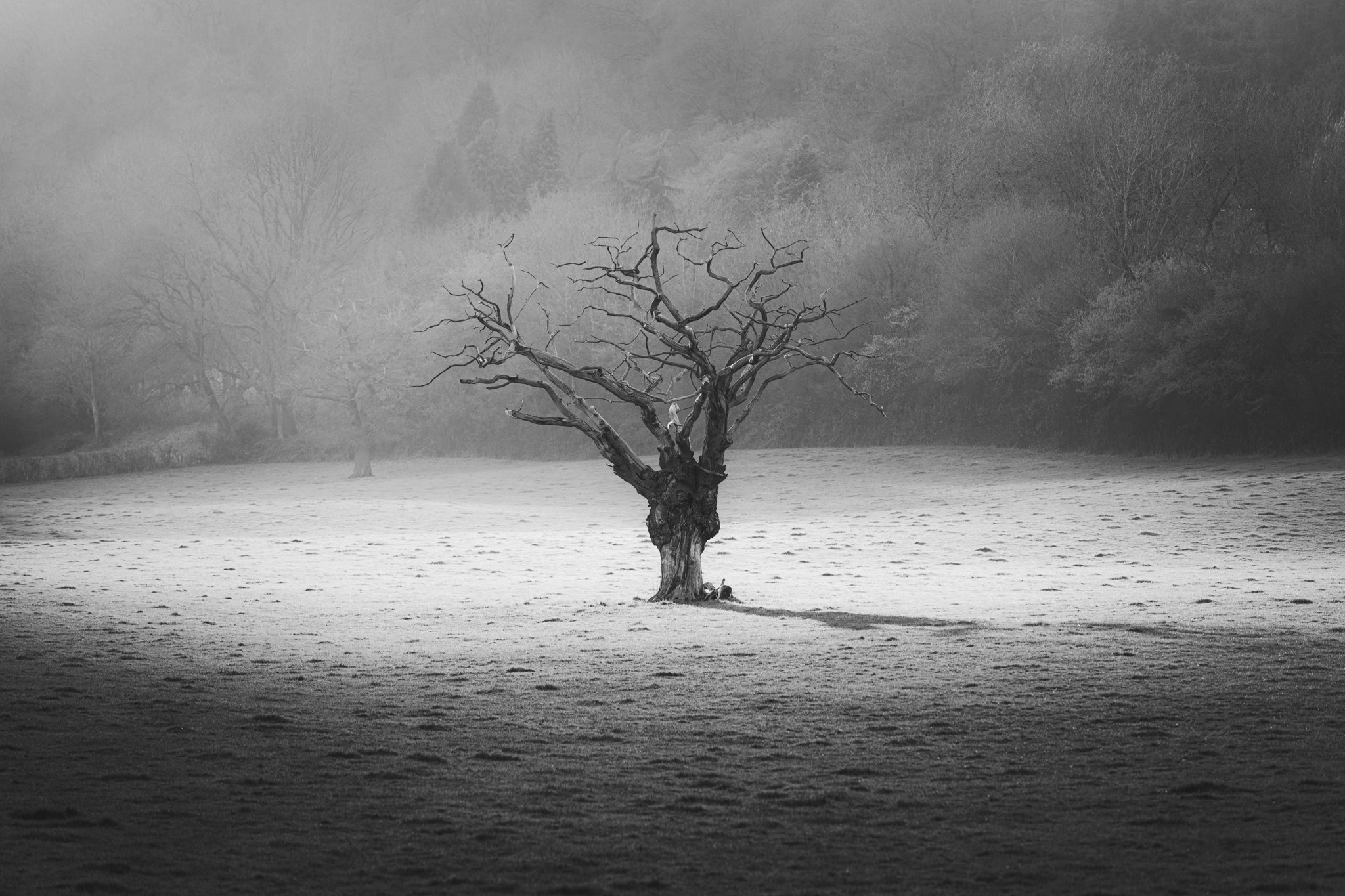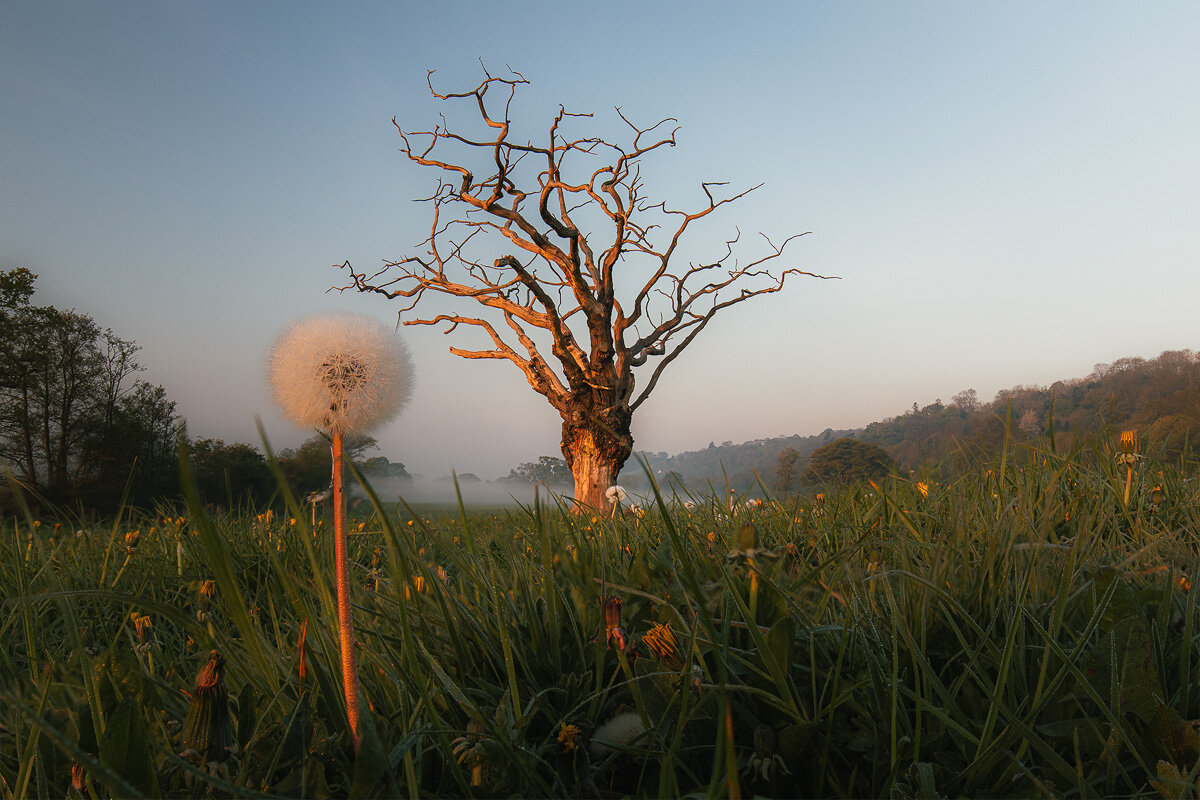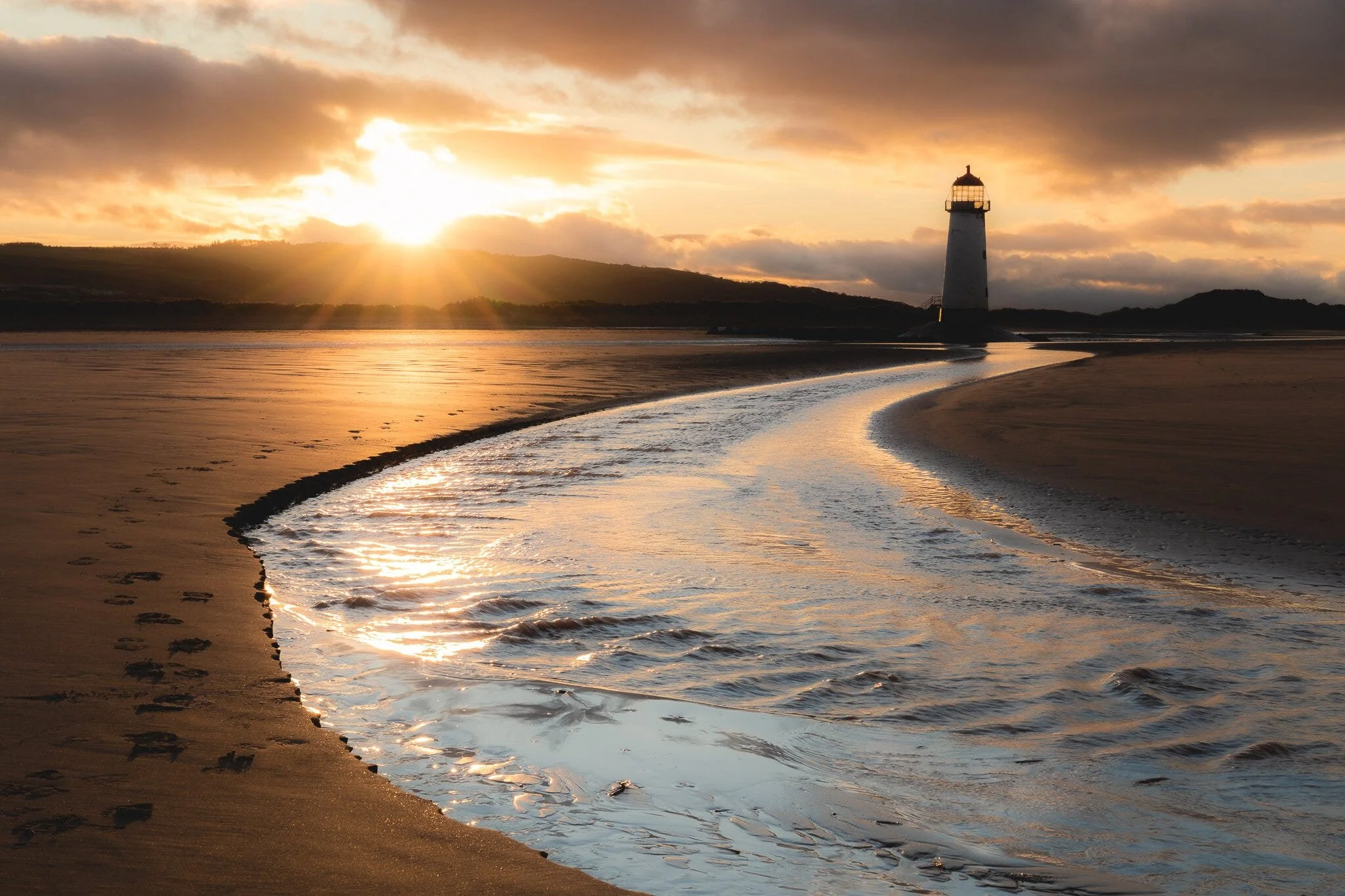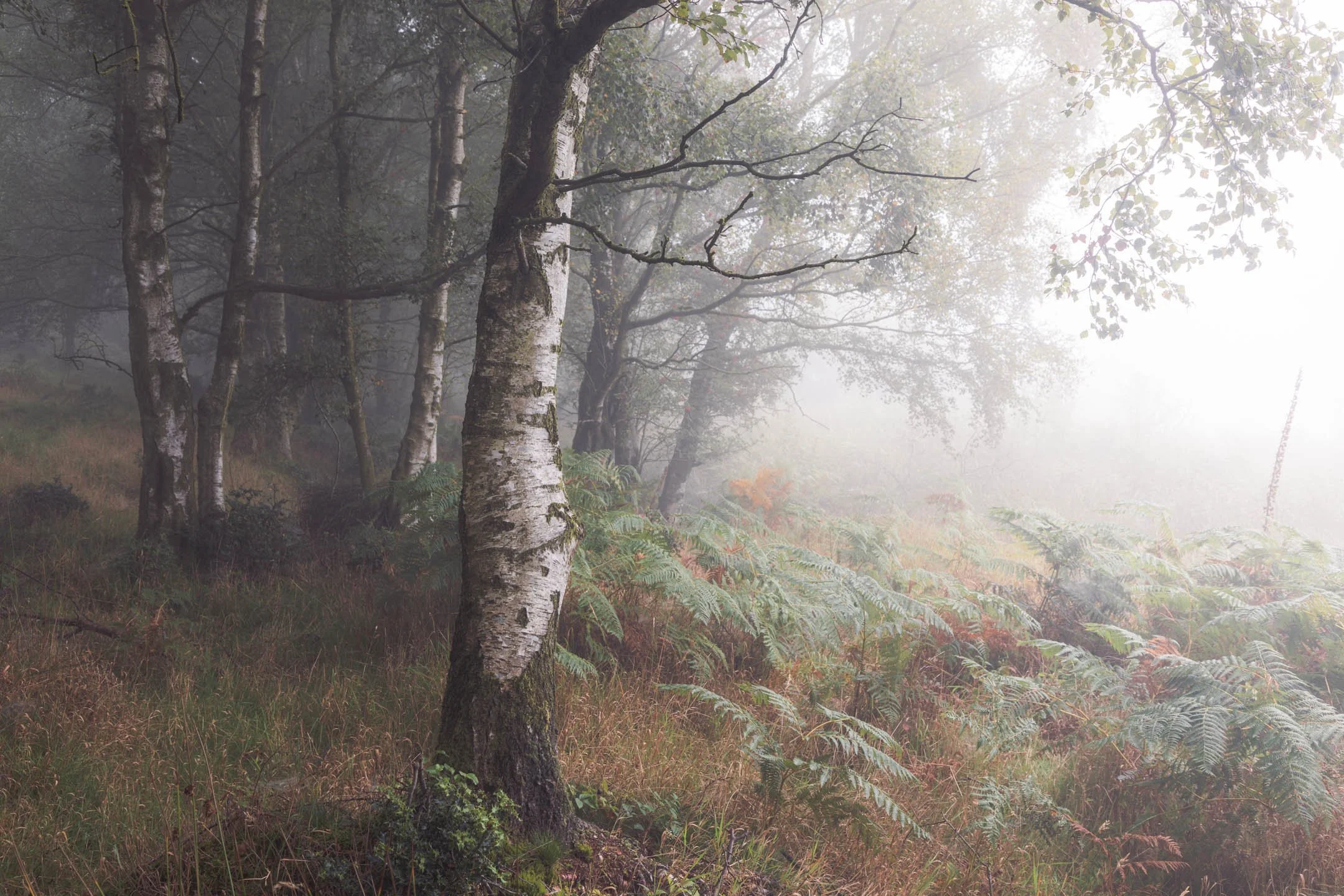Understanding Light in Landscape Photography Part 3: How to Transform Your Photographs with Light
I’m Brad Carr, and in Ten Thousand Hours, I share practical and technical articles to help you improve your landscape and nature photography. I also organise group workshops, creative retreats, and I am available for private one-to-one photography tuition as well as online and in-person creative mentoring.
Hello and welcome back to Ten Thousand Hours, the photography blog dedicated to helping you master the art of landscape and Nature photography so you can take better pictures today. In the latest and final part of this trilogy of blogs about understanding light, I am going to share with you some of my secrets to landscape photography success—tips that might well help you on your way to securing your first international magazine publication or national solo exhibition in a gallery.
If you haven’t yet read part one and part two, I recommend doing so before proceeding. You will need to have a good understanding of the different types and directions of light that can be used before you can fully understand the points I am about to share with you.
Observation Before Creation
When you find yourself in the landscape, spend some time simply observing the landscape and the light to better understand how it interacts with different subjects. Whilst tutoring on photography workshops and one-to-one sessions, I often encourage clients to leave their cameras in the bag whenever we find ourselves in a new location. Photography can become a bit habitual and formulaic if we aren’t careful, and it is easy to resort to what we know as familiar—looking for the common leading lines and other ‘rules’ that many guides tell us to abide by. The camera can sometimes be a distraction, so I think it’s important to eliminate that distraction from time to time and to come back home to ourselves, tuning into our body’s senses. I always encourage people to be mindful of their breath and to use the breath as a tool to come into the moment and connect on a deeper level with the landscape. One of the best ways to do that is to engage the senses—the key one in photography, of course, being the sense of sight.
By sitting and studying the light, rather than photographing the first thing that comes to mind, it always amazes me what I, and my clients, then begin to notice. Why not go out and try it for yourself? You might be surprised at what you see.
Observation practice: Head outdoors to one of your favourite places. Leave your camera at home and simply sit and ‘be’ in the landscape. Do nothing but pay attention to your breath and the light as it interacts with the surrounding landscape. You could refer to parts one and two of this guide to see what different kinds and directions of light you observe. Make some mental notes of any photographs that appear in your mind’s eye. Perhaps you can photograph them next time you visit.
Practice the Art of Visualisation
No portfolio-worthy photograph is created without some blood, sweat, and tears. Unless the gods of light and mist are well on your side and grant you the dream conditions upon first discovery of a landscape that is. A final photograph will usually require some dedication and patience. It can help to practice visualising the landscape in different conditions and during each of the four seasons.
When we can see the potential in a landscape and, more importantly, a specific composition, we will know when we need to return to get the optimal conditions and light. You might, for example, as I did in the example below, go out for a spontaneous walk one afternoon and stumble upon a beautiful scene with tremendous potential for photographs.
As you will have learnt in part one of the blog series, afternoon light is rarely conducive to the most mystical and atmospheric photographs. Because of my intuitive nature and deep understanding of the North Wales landscape, I knew where the light would be at different times of the day. With this understanding, I could foresee how this scene might have appeared at dawn with some low-lying mist and emotive colours in the sky.
Once you have ‘seen’ what a photograph might look like, the real work begins. It is as though a seed is planted in the mind, and the time spent away from the scene allows it to grow. Eventually, it might manifest into reality—sometimes in an even more beautiful form than we could have imagined. Of course, it isn’t always as simple as turning up the next time and ‘capturing’ your photograph. It might take eighteen months for you to be granted the conditions you dream about, as it did for me with the final images shown here. The deep fulfilment and joy that this awakens within make the wait well worth it, I can assure you of that.
PRO TIP: Return to a location time and time again. You might be pleasantly surprised at what is waiting for you. You will also notice changes in what you see as you become familiar with a particular landscape. One thing I always talk to workshop attendees about is connection. It takes time to connect with a landscape. It has to trust you before it reveals its fullest beauty for your eyes to see.
Listen to Your Intuition
Contrary to the point I made above, some of the best photographs cannot be pre-visualised in the ways I mentioned. Sometimes, we have to simply be in the right place at the right time, reacting to the light and conditions that are granted to us by Mother Nature. These kinds of photographs are our reward for our persistence and dedication to our craft. It usually pays (in reward of the resulting photographs) to be attuned to the landscape, seeing, sensing, what is happening all around us.
Being outdoors in the landscape puts us in touch with something deeper — something primal. It is as though we have an innate understanding of what is happening and about to happen in the natural world. Something inside of us knows where the light is, where it is going to be, and whether a storm is brewing or the clouds are about to part. This is our intuition — an ancient understanding and inner ‘knowing’ that many of us have lost connection to. We spend far too long in our minds, worrying about the future or regretting things in our past, or scheming to get what we want in the future. Only when we come into the present moment and fully immerse ourselves in our surroundings, activating all our body’s senses, do we give ourselves a chance of hearing this intuitive voice within.
PRO TIP: Get in touch with your intuition and learn to ‘feel’ the landscape to foresee what might be about to happen. Practice some grounding. Get your bare feet in the soil. Touch things. Smell things. Breathe deeply and feel the breath moving through your body. Empty your mind of all the noise by journaling. The clearer our minds are, the more we can fully immerse ourselves in our surroundings. Not only does this result in better photographs, but the experience of being outdoors is all the more enjoyable when we are fully present. To develop intuition, one has to return to Nature—it is, after all, our natural state of being.
Experiment with Light
Chances are, with you being here reading this blog, that you’re willing to admit that you don’t know everything about landscape and Nature photography. The beautiful thing about this art is that we never know everything, and we never possibly can. We are always learning and growing as human beings, and, therefore, our photography is always evolving, too.
Landscape and Nature photography rewards those of us who are most curious and are willing to experiment with new techniques, putting newly-gained knowledge into action. To understand what we do like, we also have to learn about what we don’t like. Therefore, one of the greatest things I ever did was to create photographs of the same scene and subjects under different lighting conditions. I would sometimes photograph a scene using the front light technique. Then I would return and photograph the same scene again, but this time I would use backlight, or side light, or diffused light (all techniques are explained in depth in part two). It is my willingness to experiment that has led me to a place where I understand my favourite types of light to use in landscape photography, and can approach a scene with knowledge of where I need to stand and when I need to return to create a photograph in my trademark style.
PRO TIP: Go to your favourite location for photography. It helps if this is one that you live near to. Find a subject and make this your focus for the next few months. Visit it in all kinds of different conditions, at different times throughout the day. Begin to build a portfolio of this subject, utilising different kinds of light. Study each one and find out what you do & don’t like. Use this challenge to begin refining your photographic style.
Pay Attention & Photograph with Intention
Two of my other key teaching points on workshops are attention and intention. Whilst photographing, small adjustments to the tripod height, focal length, focal point, and lens direction can make a huge difference to a photograph. In the above photograph, if I had been angled just a few millimetres off, I wouldn’t have managed to create the beautiful, soft orange glow where the morning’s sunlight enters the lens. Light interacts with our equipment in ways that are different from how it interacts with our eyes. My eyes didn’t see this glow, but I knew, from experience, that my lens would. That is exactly why photography is an art. There a lots of creative ways to use our cameras and lenses that can result in beautiful photographs—it is these small differences that set an excellent photograph apart from an average one. It is also important to be attentive to where we choose to stand whilst in the landscape, to be intentional about where we set our tripods and cameras up. The first place isn’t often the best option. Sometimes, a few steps to the left or right, or a few inches of extra height, can make a tremendous difference in a photograph.
What I Wish I Knew Earlier About Light
Learn to Love the Shadows
When I started in photography, I thought that everything had to be about the grand and epic—not only was this true with the kind of scene that I wanted to photograph, but also about the light, too. I thought that everything had to be well-lit so that everything could be seen. It took me a few years to realise that photography is as much about what to exclude as it is what to include. This was true with the subject, and it was also true with light. One of the defining moments for me when it came to understanding light was when I photographed this coastal scene from North Wales:
It was one of the first photographs that I created, where I felt like I had understood the light and used what was available to me to great effect. I still remember the moment I looked at the screen after pressing the shutter and thinking ‘wow’ to myself as I saw the results of my creation for the first time. It was a defining moment in my photographic journey so far and a big step up in the quality of photographs that I was creating. I have used this style of lighting countless times since then, to great effect. This was a photograph in which I had also learnt to embrace the shadows. Shadows add depth and emotion to photographs. As humans, many of us resonate with darkness, and I think it is, therefore, vital to include some within our creations. Many of my favourite scenes from films also include this darker, more atmospheric lighting style.
PRO TIP: It can be difficult to manage the backlight in landscape photography. A useful piece of advice is to try to wait for the clouds to partially cover the sun so that the light is diffused and, therefore, much softer in appearance. You can also use trees to diffuse light to great effect. Shooting into the sun like this without something to diffuse the light otherwise results in an unattractive, bright white sky.
Embrace the Weather for Striking Landscape Photographs
One thing I wish I’d have learnt earlier is that there are photographs to be made in all kinds of weather and at different times of the day. Yes, the light is usually much softer and more beautiful during the early hours of morning and sunset, but when you build up your understanding of light (and you’re brave enough to go out exploring whatever the weather), you can make some of the most striking photographs during all hours of the day. Once you have gained some in-the-field awareness around how each of the different styles of light can be used on a practical level—meaning you have to go out and see for yourself what I have written in these guides—it almost becomes second nature to create portfolio-worthy photographs when Mother Nature grants us the conditions.
Some of the Best Photographs are Planned
I remember feeling incredibly frustrated in the earliest days of my landscape photography journey. My photographs just would not look like those I was seeing online, in magazines, or books. I was a little arrogant, in hindsight, believing that I could just turn up and be granted that perfect picture after a year or two of photographing. What I had failed to realise was that some of the professionals had dedicated hours upon hours researching the ‘right’ locations for them, then scouting those locations to familiarise themselves with the landscape, trying and failing to get those perfect conditions that were conducive to portfolio-worthy photographs many times over.
Over time, I began to see the results for myself. The more time I spent in a certain location, the better my photographs would become. As I familiarised myself with the landscape and exhausted all of the obvious compositions, I started to see things I hadn’t seen previously. It took me around three years to learn the importance of spending time in one location, but when I understood this for myself, and I saw the resulting photographs, there was no going back. Now, the majority of my time photographing is spent in intimate corners of the landscape—places that aren’t particularly famous, but, to me, hold an abundance of photographic potential.
Trust in the Timing
The difference between an average photograph and an excellent photograph often comes down to one thing: timing. Sometimes, just a few split seconds are enough to transform the appearance and overall feel of a photograph. You have to know exactly when to open the shutter to record the most spectacular light. Light is ephemeral. It comes and then it goes—often much quicker than we are aware of. A certain type of light might never be seen again. When the weather is changing, it is even more important to pay close attention. A passing snowstorm and a five-second break of fleeting light can result in a photograph like this:
Referring to one of my earlier points, this is why it is important to be attuned to your intuition. To be aware of what is happening all around you as well as in the landscape within, at any given moment, is our greatest superpower as human beings. In this day and age, we are rarely fully existing in the present moment, completely engaged with the current task at hand. Our attention is scattered; on social media, the news, the future, and the past. It is those photographers who master the art of presence, I believe, that will create the most beautiful and emotionally stirring photographs.
Conclusion
That concludes my in-depth, three-part guide to understanding and using light to transform your landscape photography. I hope you learnt something useful and that you now feel inspired to go out and create your own photographs using the different types and directions of light and methods for using light described in this three-part, practical guide.
For anyone wishing to take their landscape and photography to new depths of meaning, you should focus most of your attention on understanding light and realising the power that it holds. It is the vital component in any photograph. It adds depth, contrast, interest, and meaning, and I can guarantee that most of your favourite photographers have spent countless hours observing it, studying it, and practicing with it. Now it is your time to go out and do the same.
If you’re looking for somewhere to share the results of your future photographic creations, you might like to join the Finding Light Photography Community on Facebook. It is a closed, intimate group for like-minded photographers to share, learn, and grow. Occasionally, I share exclusive updates and links to articles and events which you might also find useful.
If you would like to receive further practical and technical articles like this directly to your email inbox, consider signing up for my newsletter. I send out monthly emails with links to new writings, events, workshops, and things I have found inspiring that month.
I’m Brad Carr, and here in Ten Thousand Hours, I share practical and technical articles to help you improve your landscape and nature photography. I also organise group workshops, creative retreats, and am available for private one-to-one photography tuition as well as online and in-person creative mentoring.


